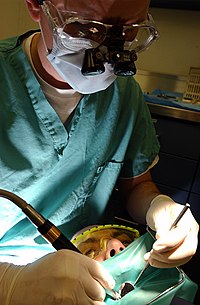
Photo from wikipedia
DakkakI Jalila 1 , Dhoum Sara 1 , Dr. Drouri Sofia 1 , Dr. Skalli Radia 2 and Jabri Mouna 3 . 1. Assistant professor, department of restorative dentistry and… Click to show full abstract
DakkakI Jalila 1 , Dhoum Sara 1 , Dr. Drouri Sofia 1 , Dr. Skalli Radia 2 and Jabri Mouna 3 . 1. Assistant professor, department of restorative dentistry and endodontics, school of dentistry of Casablanca; Morocco. 2. Resident, department of restorative dentistry and endodontics, school of dentistry of Casablanca; Morocco. 3. Professor, department of restorative dentistry and endodontics, school of dentistry of Casablanca; Morocco. ...................................................................................................................... Manuscript Info Abstract ......................... ........................................................................ Manuscript History Received: 01 October 2019 Final Accepted: 03 November 2019 Published: December 2019 The main objective of any root canal treatment of an infected teeth is to eliminate microorganisms that colonize the canal system. This disinfection is essentially based on a chemo-mechanical preparation, the endodontic instruments to shape the main canal, associated to the action of the irrigation solutions. The irrigation sequence should begin as soon as the access cavity is performed, during root canal shaping and at the end of the root canal preparation, in order to remove the smear layer generated by the action of the shaping instruments. This action is obtained by the combination of 2.5% sodium hypochlorite and an EDTA-based chelator (Ethylene diamine tetracetic acid). We will explore this whole process through a clinical case with cystlike chronical periapical periodontitis.
Journal Title: International Journal of Approximate Reasoning
Year Published: 2019
Link to full text (if available)
Share on Social Media: Sign Up to like & get
recommendations!